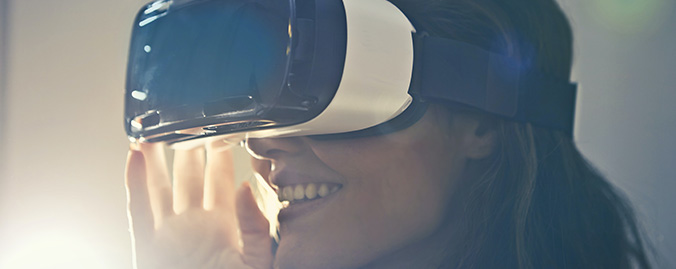Developments in technology have opened new and exciting opportunities for businesses to reach potential customers. Two new innovations are virtual reality (VR) and augmented reality (AR), both of which have a high focus on customer engagement through the use of artificial environments. According to Hubspot the economic impact of virtual and augmented reality is predicted to reach $29.5 billion this year and this increased uptake in the technology can have a profound effect on businesses. So what are these new engagement tools and how can they benefit a business’s digital marketing strategy?
Virtual Reality vs Augmented Reality?
Virtual reality is an experience that looks to transport someone to a different environment through the use of goggles or visors. It achieves this blocking out any external visual stimulus. Meaning that the individual can fully immerse themselves in the experience. The most common examples of VR are usually seen in the gaming world, with VR gaming becoming increasingly popular.
Augmented reality, as the name suggests, looks to augment real life through overlaying of digital information over the real world. This is usually achieved through the use of smartphones such as Snapchat’s Bitmoji characters and it allows for high interaction with the user.
How Can VR and AR Benefit Businesses?
1. Expansion of Selling and Revolutionising of Ecommerce
As with any new development in digital marketing the main aim is to help businesses achieve conversions and sales. Whilst VR and AR haven’t reached the heights of being able to carry out final transactions, they are highly effective at pushing consumers along the buying journey. This has already been seen in a number of different industries such as real estate which have utilised virtual 360° tours of properties, as well as retailers. Brands such as Sephora, Ikea and Timberland have begun to implement AR as a means of customers testing products before purchasing, helping consumers to find the perfect product from the comfort of their own home or while in-store.
2. New Storytelling Vehicles and Building Relationships
Both AR and VR are perfect for storytelling due to the high level of interactivity they command with potential customers. This high immersion allows for brands to not only advertise to individuals, but to also build relationships and showcase a more human side to a business. Many companies have already looked to implement this through the use of virtual tours, usually around a business site or manufacturing area to showcase how their products are created. Whereas it has also been used to promote other philanthropic projects such as Toms virtual giving trip, which utilised VR to showcase Toms donations of footwear to schools in Peru.
3. Creating Memorable Experiences
Positive experiences can help to not only cement recognition of a brand, but also make them more willing to interact with the brand. Brands have looked to leverage both VR and AR to achieve this in store and even through their own products. The overall plan being to focus more on entertainment and indirect selling through providing a memorable experience. Products are also providing these unique experiences, for instance some children’s books are implementing augmented reality to allow the stories to come to life through the use of a smartphone.
4. Real World Advertising
New advertising opportunities have become available through the use of VR and AR. Which has meant that some businesses have become a lot more innovative with their advertising. Allowing for new and exciting ways for potential customers to get involved with the business. Burger King is one such case, when they ran their “Burn Ad” campaign. This involved people pointing their smartphones at Burger Kings’ competitors’ advertising, the advertisement would then burn up on their phone and be replaced by a free whopper promotion from Burger King. Offering a new way to interact with their customers and further strengthening the brand relationship.
Finding The Balance (VR, AR, Digital Marketing)
The benefits of VR and AR are plentiful and with the increased use of these mediums, they will become more prevalent across a range of businesses. However, uptake of this technology is still in the early stages compared to other digital marketing mediums and some companies are only scratching the surface of their capabilities.
Any business that wants to remain competitive not only needs to be aware of new advancements in marketing, but how they can be implemented strategically for their business. It is also important to make sure that your current digital strategies are providing optimal performance for their business. To find out more about new developments in the world of digital marketing, as well as best practices for maximizing your company’s performance, talk to the team at Redline Digital today.
